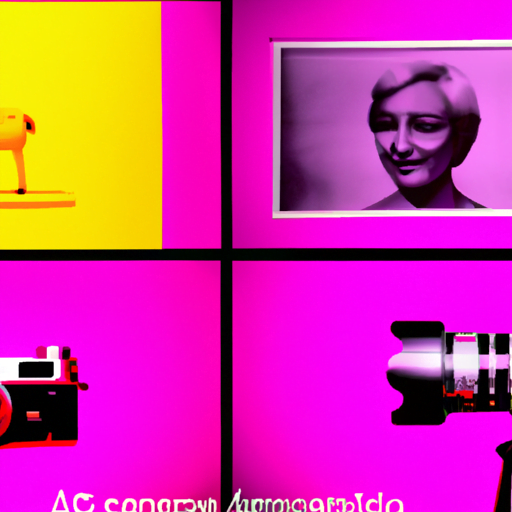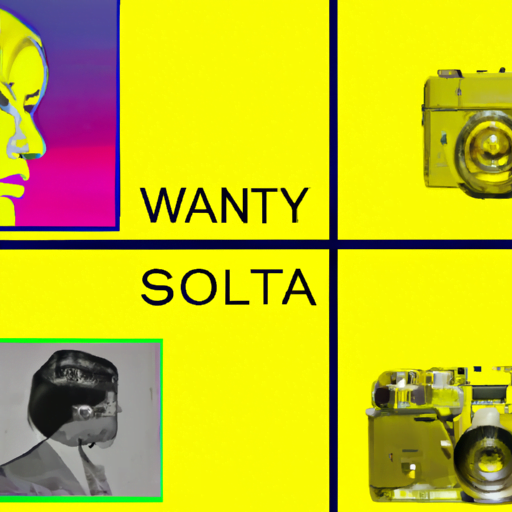
-
Table of Contents
- Storytelling through Graphic Design: Engaging Narratives
- The Power of Visual Storytelling
- Case Study: Nike’s “Just Do It” Campaign
- Elements of Storytelling in Graphic Design
- 1. Visual Hierarchy
- 2. Color Psychology
- 3. Typography
- 4. Imagery and Illustrations
- Examples of Storytelling in Graphic Design
- 1. The New York Times’ “The Displaced” Interactive Feature
- 2. Coca-Cola’s “Share a Coke” Campaign
- The Impact of Storytelling in Graphic Design
- 1. Emotional Connection
- 2. Increased Engagement
- 3. Enhanced Brand Identity
- Conclusion
Storytelling through Graphic Design: Engaging Narratives

Graphic design is a powerful tool that goes beyond aesthetics. It has the ability to convey stories, evoke emotions, and engage audiences in a way that words alone cannot. By combining visual elements, typography, and imagery, graphic designers can create compelling narratives that captivate and resonate with viewers. In this article, we will explore the art of storytelling through graphic design and how it can be used to create engaging narratives.
The Power of Visual Storytelling
Humans have been telling stories since the dawn of time. From cave paintings to oral traditions, stories have played a crucial role in our evolution and communication. Visual storytelling takes this concept to a new level by using images, colors, and design elements to convey narratives.
According to a study conducted by the University of California, San Diego, our brains process visual information 60,000 times faster than text. This means that visual storytelling has the potential to capture attention and convey messages more effectively than traditional forms of communication.
Case Study: Nike’s “Just Do It” Campaign
A prime example of the power of visual storytelling is Nike’s iconic “Just Do It” campaign. The campaign, launched in 1988, aimed to inspire and motivate athletes of all levels. The simple yet powerful slogan, combined with visually striking images of athletes pushing their limits, created a narrative of determination, perseverance, and success.
The campaign resonated with audiences on a deep emotional level, leading to a significant increase in Nike’s sales and brand recognition. By using graphic design to tell a story of triumph and empowerment, Nike was able to connect with its target audience and create a lasting impact.
Elements of Storytelling in Graphic Design
Effective storytelling through graphic design involves the skillful use of various elements. Let’s explore some of the key components that contribute to engaging narratives:
1. Visual Hierarchy
Visual hierarchy refers to the arrangement and prioritization of elements within a design. By strategically placing elements of different sizes, colors, and positions, designers can guide the viewer’s attention and create a narrative flow. This helps to convey the main message and guide the viewer through the story being told.
2. Color Psychology
Colors have the power to evoke emotions and set the tone of a design. Different colors have different psychological associations, and designers can use this knowledge to enhance the storytelling aspect of their work. For example, warm colors like red and orange can convey energy and excitement, while cool colors like blue and green can evoke calmness and tranquility.
3. Typography
Typography plays a crucial role in storytelling through graphic design. The choice of fonts, sizes, and styles can convey personality, mood, and tone. For example, a bold and playful font may be used to convey a lighthearted story, while a more elegant and sophisticated font may be used for a serious narrative.
4. Imagery and Illustrations
Images and illustrations are powerful tools for storytelling. They can evoke emotions, set the scene, and provide visual context. By carefully selecting and incorporating relevant imagery, designers can enhance the narrative and create a more immersive experience for the viewer.
Examples of Storytelling in Graphic Design
Let’s explore some real-world examples of graphic design that effectively utilize storytelling:
1. The New York Times’ “The Displaced” Interactive Feature
In 2015, The New York Times released an interactive feature called “The Displaced.” The project aimed to shed light on the lives of three refugee children from different parts of the world. Through a combination of powerful photography, videos, and interactive elements, the feature created a compelling narrative that allowed viewers to empathize with the children’s experiences.
2. Coca-Cola’s “Share a Coke” Campaign
Coca-Cola’s “Share a Coke” campaign, launched in 2011, aimed to create a personal connection with consumers. The campaign featured personalized bottles and cans with popular names and phrases. By incorporating personalization and storytelling, Coca-Cola was able to create a sense of belonging and emotional attachment to their brand.
The Impact of Storytelling in Graphic Design
Storytelling through graphic design has numerous benefits and impacts:
1. Emotional Connection
Engaging narratives created through graphic design have the power to evoke emotions and establish a deep connection with the audience. By tapping into the viewer’s emotions, designers can create a lasting impact and foster brand loyalty.
2. Increased Engagement
When a design tells a story, it captures the viewer’s attention and encourages them to explore further. This increased engagement can lead to longer interaction times, higher conversion rates, and a more memorable experience.
3. Enhanced Brand Identity
Graphic design can be used to shape and reinforce a brand’s identity. By incorporating storytelling elements into their designs, brands can establish a unique and memorable identity that sets them apart from competitors.
Conclusion
Storytelling through graphic design is a powerful tool that can captivate audiences, evoke emotions, and create lasting impressions. By utilizing elements such as visual hierarchy, color psychology, typography, and imagery, designers can craft engaging narratives that resonate with viewers. Real-world examples like Nike’s “Just Do It” campaign and The New York Times’ “The Displaced” feature demonstrate the impact of storytelling in graphic design. By harnessing the power of storytelling, designers can create meaningful connections, increase engagement, and enhance brand identity. So, the next time you embark on a design project, remember the power of storytelling and let your creativity weave a compelling narrative.
